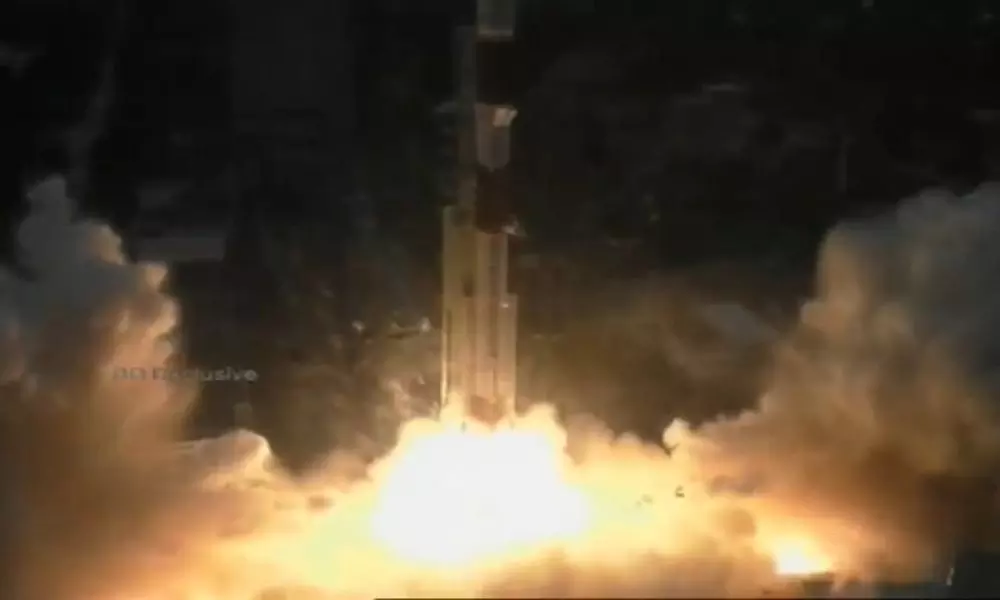Live
- Can air pollution affect weight gain and hormonal health?
- Vishvaraj Singh Mewar's coronation ceremony in Chittorgarh on Nov 25
- KL Rahul’s Controversial Dismissal Sparks Debate in 1st Test at Perth
- Cricket Australia to honour late Philip Hughes on 10th anniversary
- Khushi Kapoor shines bright
- Suhana Khan’s power dressing game is inspiring
- Disha Patani sets the internet ablaze
- YSRCP Announces Boycott of PAC Elections
- Badshah and Davido tease epic collaboration
- Skills for the future: Adapting education to meet employability demands
Just In
India's PSLV rocket lifts-off with radar imaging satellite


India's PSLV rocket lifts-off with radar imaging satellite
India's Polar Satellite Launch Vehicle (PSLV-C49) rocket carrying radar imaging earth observation satellite EOS-01 (formerly RISAT-2BR2) and nine foreign satellites lifted off from the rocket port at Sriharikota in Andhra Pradesh on Saturday.
Sriharikota (Andhra Pradesh) : India's Polar Satellite Launch Vehicle (PSLV-C49) rocket carrying radar imaging earth observation satellite EOS-01 (formerly RISAT-2BR2) and nine foreign satellites lifted off from the rocket port at Sriharikota in Andhra Pradesh on Saturday.
The rocket with 10 satellites lifted-off from the first launch pad at the Satish Dhawan Space Centre (SDSC) in Sriharikota at 3.02 p.m.
The primary passenger of the 44.5 metre tall PSLV-C49 will be the Indian radar imaging satellite EOS-01 (formerly RISAT-2BR2) with synthetic aperture radar (SAR) that can shoot pictures in all weather conditions.
The satellite can take pictures day and night and will be useful for surveillance as well as civilian activities.
According to ISRO, EOS-01, is a 630 kg earth observation satellite, intended for applications in agriculture, forestry and disaster management support.
The nine foreign satellites piggybacking are from: Lithuania (1-R2, technology demonstrator), Luxembourg (4 maritime application satellites by Kleos Space) and the US (4-Lemur multi mission remote sensing satellites).
The PSLV in normal configuration is a four stage/engine expendable rocket powered by solid and liquid fuels alternatively. Six booster motors will also be strapped on to the first stage to give higher thrust during the initial flight moments.
But the 44.4 metre tall PSLV rocket that flew on Saturday was the DL variant having only two strap-booster motors. The lift off weight of the rocket is 259 ton.
This rocket variant was used the first time to put the Microsat R satellite into orbit on January 24, 2019.
The Indian space agency has PSLV variants with two and four strap-on motors, larger PSLV-XL and the Core Alone variant without any strap-on motors.
The choice of the rocket to be used for a mission depends on the weight of the satellite and the orbit where the satellite has to be orbited.

© 2024 Hyderabad Media House Limited/The Hans India. All rights reserved. Powered by hocalwire.com






